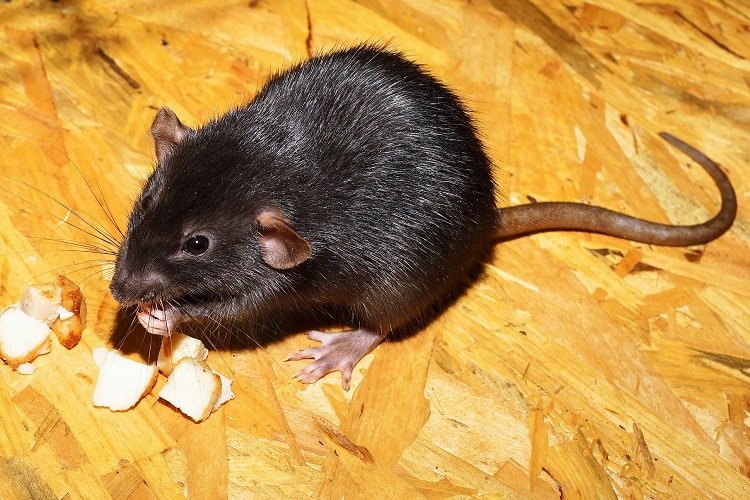Many animals hibernate in the winter because of the colder temperatures, but mice are active all year. When the weather cools, mice have a more difficult time finding reliable sources of their favorite foods, such as seeds and grass. That means they’ll look for food elsewhere, including inside your house.
Learn how to recognize the tell-tale signs of mice in your home and how to keep mice at bay so you can have a safe and rodent-free winter.
How to Determine Whether You Have Mice in Your Home
If you’ve begun to suspect that you have mice in your home due to scratching, gnawing, running, or rustling noises, you’re on the right track. This is especially true if the noises happen at night, as house mice are mostly active at night.
A silent night, on the other hand, does not necessarily imply that mice aren’t a problem. Keep an eye out for any other signs of a mouse infestation, such as:
- Droppings left in trails of what appear to be chocolate sprinkles
- Nests made from materials such as shredded paper
- Insulation mouse corridors and burrows
- Chewing evidence on items such as boxes, plastic containers, clothing, or wooden spoons
- Urine-stained or urine-smelling areas (in the case of a huge infestation)
Household Rodent Control
Mice and other rodents, according to the Centers for Disease Control and Prevention (CDC), can transmit a variety of diseases, so you don’t want them in your home. However, dealing with a mouse problem on your own can be extremely difficult and stressful. Furthermore, using rodenticides to control mice can be hazardous if the chemicals are not handled properly.
Though proper sanitation can help, getting rid of mice can be difficult, which is why many people hire a professional rodent control service to handle the job. A trained technician can inspect your home to see if mice are the source of your problem. Then he or she can collaborate with you to determine the best course of action.
How to Keep Mice at Bay
You most likely do not want to deal with mice in your home. While there are no foolproof methods to keep these rodents away, there are some things you can do to help deter them.
Remove all possible entry points.
Examine your home for possible entry points for mice, such as loose siding, gaps around windows and doors, foundation cracks, and holes around dryer vents. Any openings larger than a quarter-inch should be sealed.
Maintain a clean kitchen.
A clean kitchen will not, by any means, deter mice. A kitchen with bits of food on the floors, counters, and in sink traps, on the other hand, can attract mice like moths to a flame. Furthermore, keep dried goods (including pet food) in tightly sealed metal or glass containers that mice cannot chew through.
Plant some flowers.
Mice can enter your home by scurrying across tree limbs and entering through the attic or eaves. You should also keep gardens and shrubs trimmed and tidy so that new points of entry can be easily identified and addressed.
Clear the clutter.
To discourage mice from setting up camp right outside your house, keep potential shelters such as piles of wood, bricks, or stones far away from the foundation.
Mice may not sleep through the winter, but that doesn’t mean you have to invite them in. Armed with these tips, you can reduce your chances of encountering unwelcome mice in your home this year.
Mice are more common in homes than rats, but both are found in barns and other outbuildings, drawn there by animal feed stores. Old barns are especially vulnerable because they are likely to have gaps in their structures that allow rodents and other four-legged pests easy access. And it doesn’t take much: mice can fit through a 14-inch opening, while rats only need a 12-inch opening. If the opening is too small, they will easily enlarge it with their sharp teeth.
Understanding the differences in behavior and habits between mice and rats can help you develop a rodent control strategy. In general, rats are cautious/risk averse, whereas mice are curious and more likely to investigate new things, including traps. This means that when setting traps and bait stations for rats, you must be more cautious than when setting traps and bait stations for mice.
Mice, by the way, are terrified of rats and can detect their presence. So, if you’re a glass-half-full kind of person, the good news is that if you have a rat problem, mice are unlikely to pile on.
What Is It That Draws Mice and Rats in the First Place?
Mice and rats infiltrate homes and other structures, including vehicles, in search of food and shelter, as well as to construct a breeding nest. Contrary to popular belief, the presence of rodents is not associated with poor sanitation or a lack of cleanliness. Rodents are more likely to enter illegally when it is cold outside and their normal food sources are scarce. They are drawn to indoor livestock grain, pet and bird food, as well as, of course, human food. Yes, they will be drawn to any unsecured garbage containing food.
A rodent infestation can occur without your knowledge.
It takes about four weeks for mice to reach sexual maturity. Females can become pregnant once a month and have up to 40 babies per year. Rats, depending on the species, can reach sexual maturity in about five weeks, and each female produces five litters of 7-14 offspring per year on average. Rodents can clearly take over and become more than just a nuisance in a relatively short period of time if you are not vigilant about deterring them, given their uber-efficient reproductive cycle.
Symptoms of Mice and Rats
Droppings are usually the first sign of rodent entry, but you may also notice gnawing or food pilfering. You might get a whiff of musky rodent urine if you have a large infestation. Look closely in dark, out-of-the-way areas of your basement or attic for disturbed insulation and possibly oily rub marks where they travel along walls. Many people are unpleasantly surprised to discover the presence of rodents only when an electrical appliance fails due to rodents chewing on the cord!




